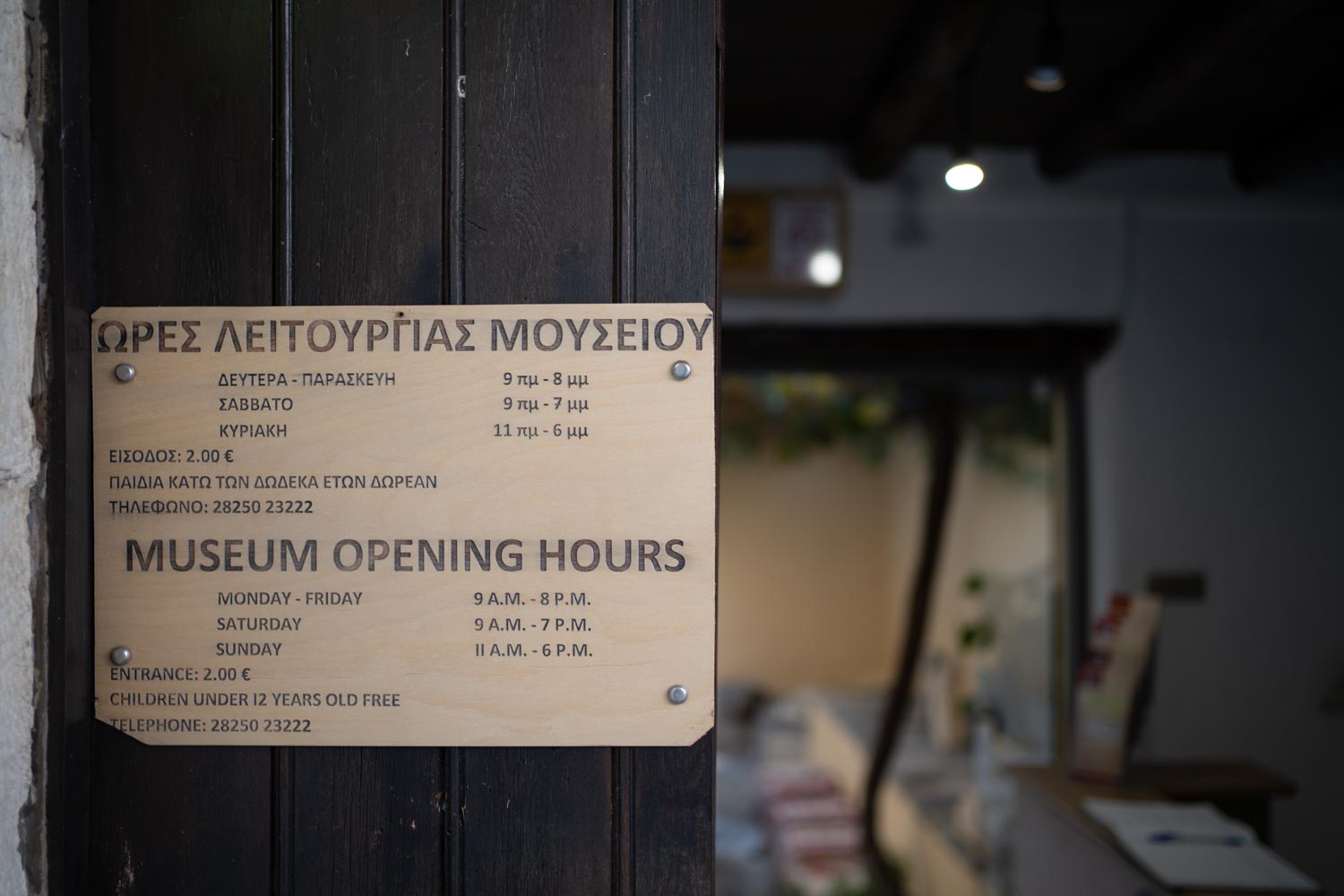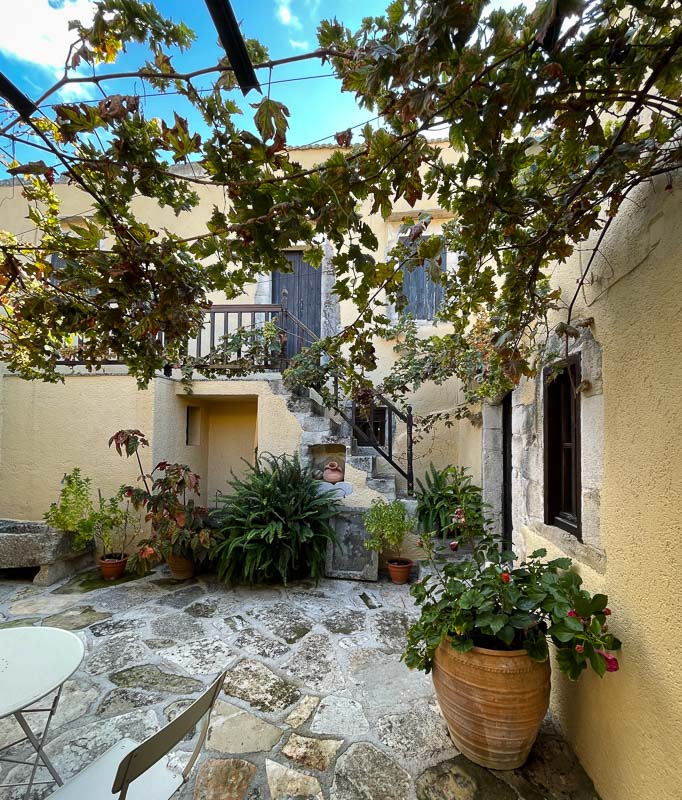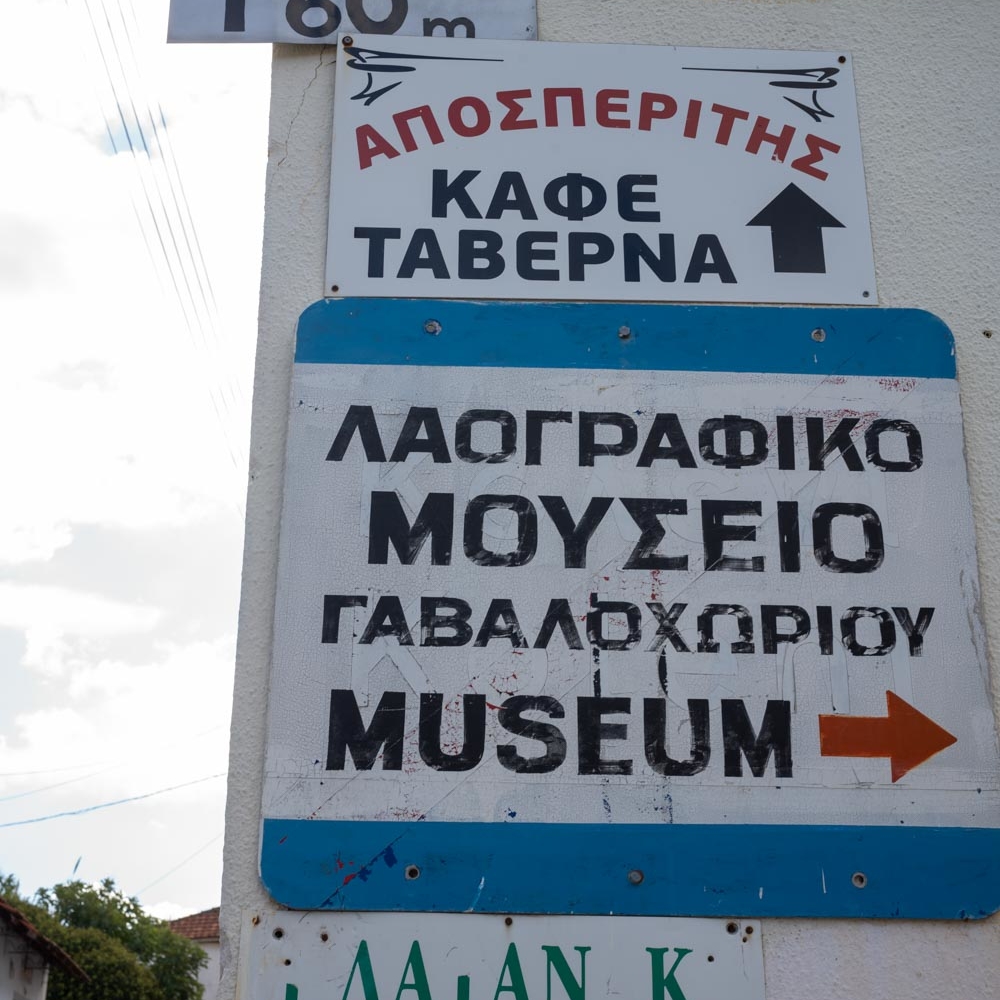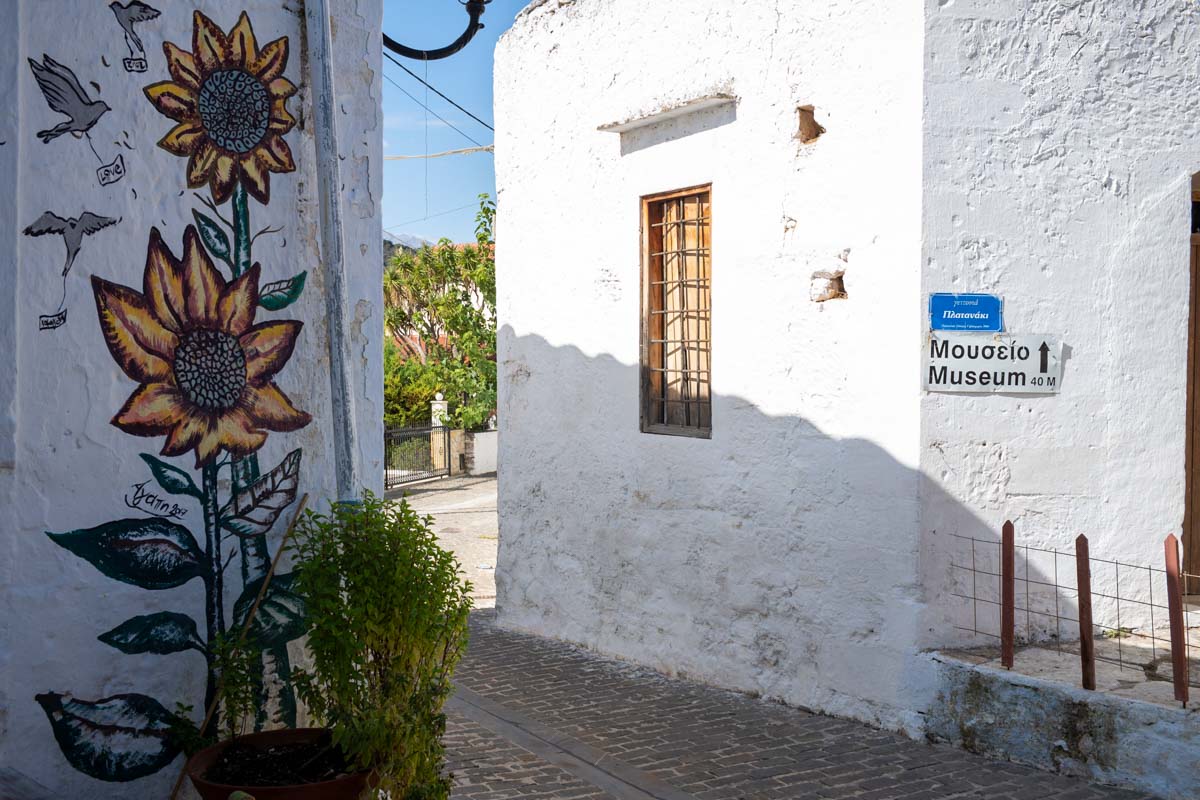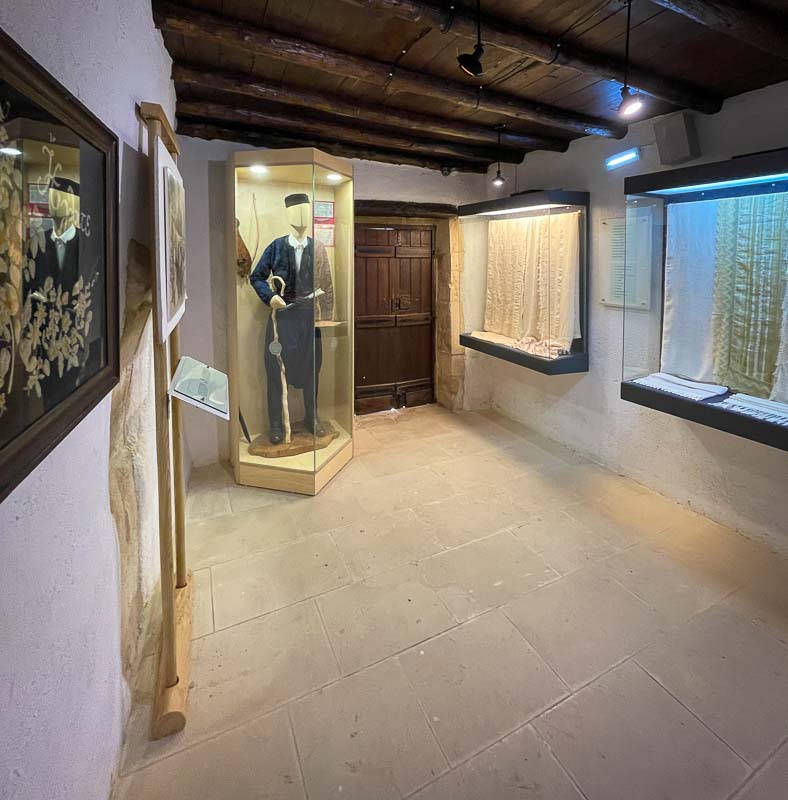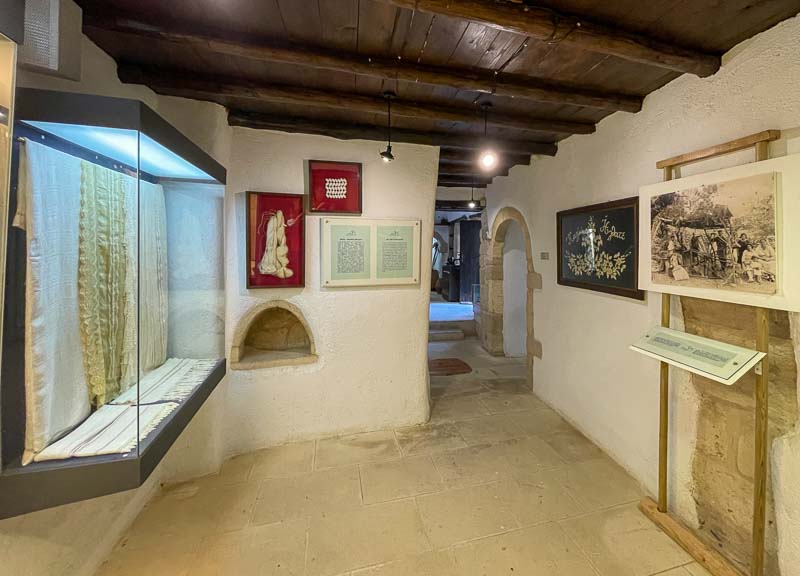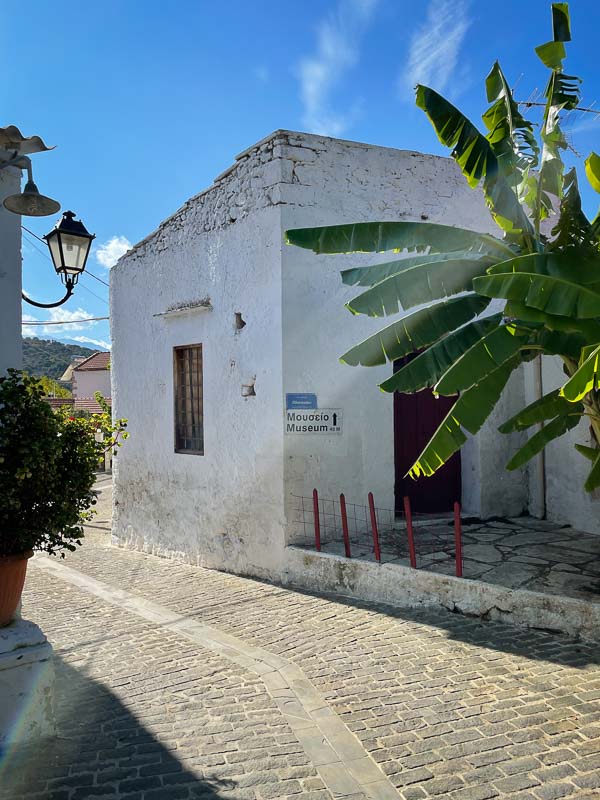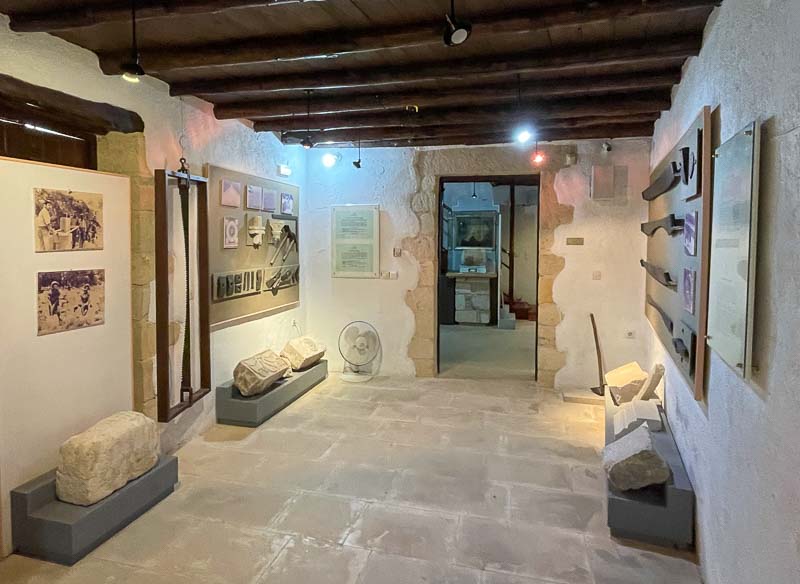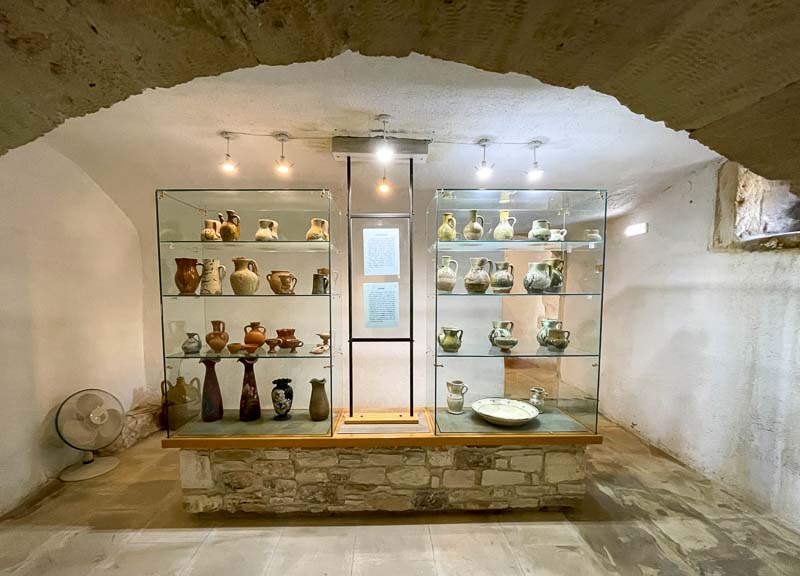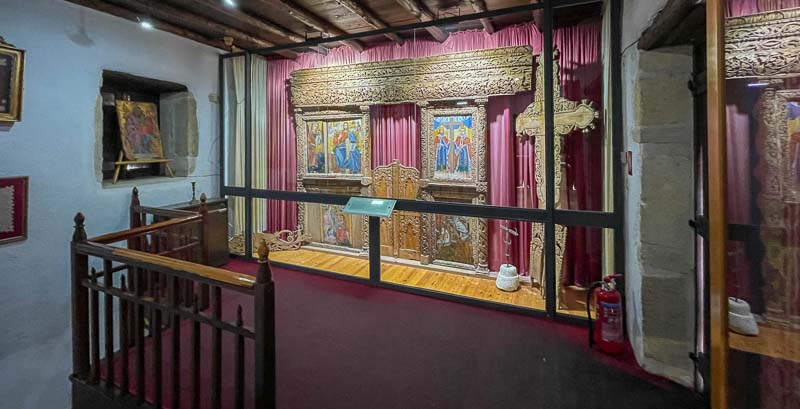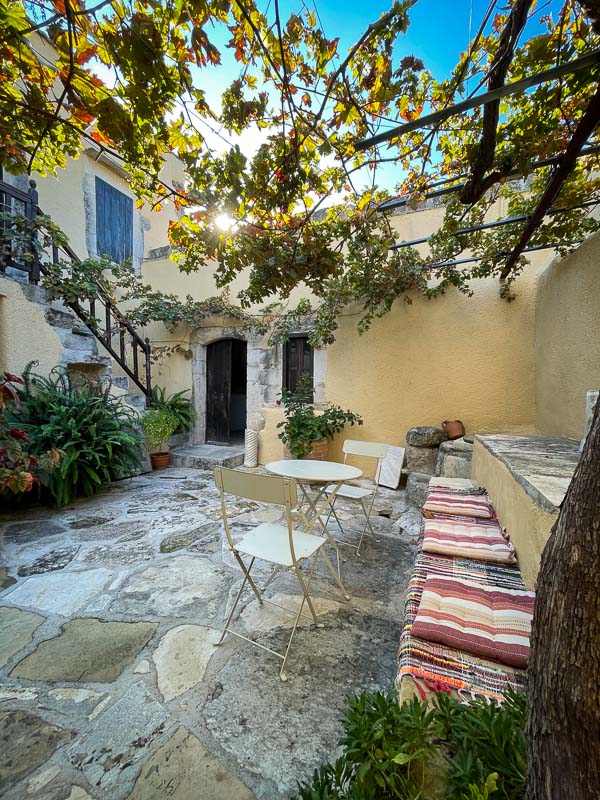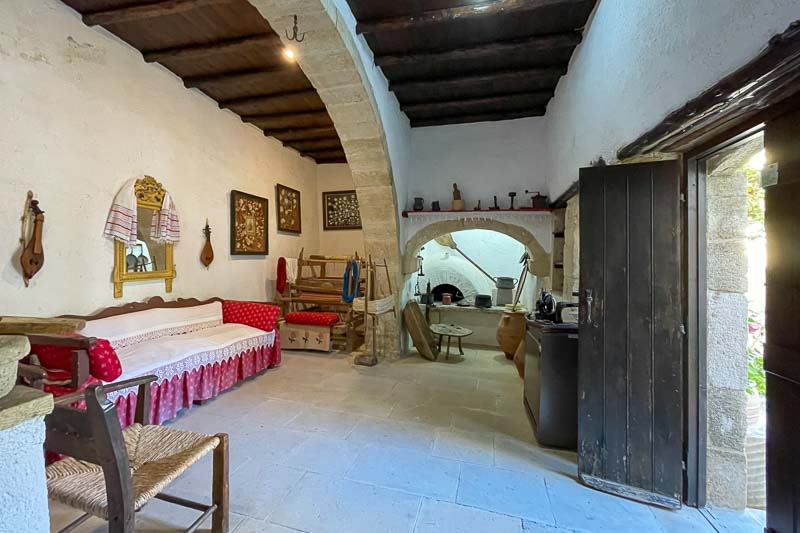the Historical and Folklore Museum of Gavalochori
The Historical and Folklore Museum in Gavalohori was founded in 1968 and was officially opened in September 1993. It is housed in a building that is a typical sample of the local architecture and is housed on two floors: the ground floor with a balcony, internal yard, an arched house with auxiliary rooms and a mezzanine (ontas). Part of the building was built during the Venetian period, the first floor was built in Turkish Era.
The exhibited objects are accompanied by explanatory texts, photographs, drawings, models and are enriched with new exhibits every year. It includes 7 rooms with the themes: Kamarospito (arched house), Silk, Pottery, Kopaneli (lace), Stone carving, Church, Wood carving, History.
Among the most important exhibits of the museum are:
the Kamarospito (arched house) that is an accurate representation a Cretan house a loom, kitchen with traditional dishes, the wine press which turned to a bed and a storage space, the living room, the room with the barrels and the typical armchair with one arm (the other should be free for the weapon).
Cretan costumes made entirely of local silk
The wedding dress made from kopaneli (Cretan lace)
The wooden iconostasis (icon shrine) of cypress wood, showing the tripartite structure of the post-Byzantine iconostasis.
The guns and the swords from the struggles of the Cretans for freedom, a small part of historical paintings and lithographs representing the major events of the Greek and the Cretan history.
Coins of the Roman, Byzantine, Venetian, Turkish Eras and Cretan State, and a coin of Syracuse (405-345 BC).
Medals awarded on battlefields, by locals.

